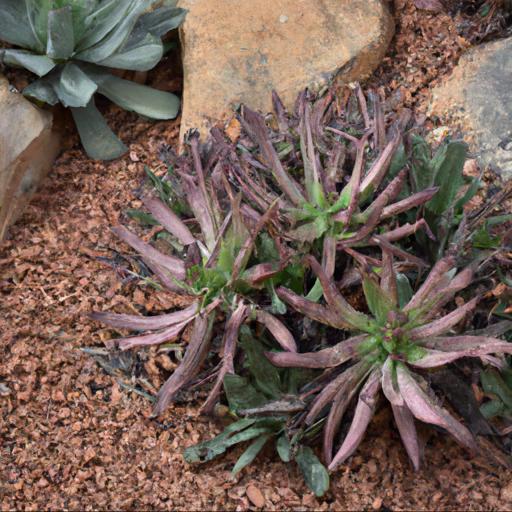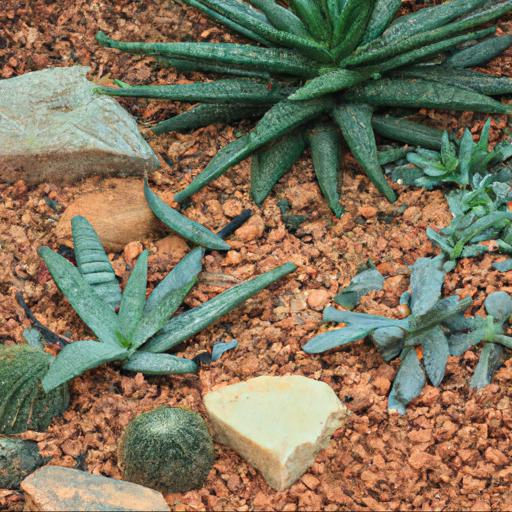Having a garden in a drought-prone area can be a challenge. But with the right knowledge and preparation, you can have a beautiful, thriving garden even in the driest of climates. Drought-tolerant plants are a great option for anyone looking to add some greenery to their garden without having to worry about regular watering.
These hardy plants can survive in arid conditions and are easy to care for. Here we’ll discuss some of the best drought-tolerant plants to grow and provide helpful tips on how to get the most out of them.
Benefits of growing drought-tolerant plants

Gardening in dry and arid areas doesn’t have to be a challenge for homeowners. With the use of drought-tolerant plants, gardeners in these climates are equipped with the tools necessary to cultivate lush and vibrant gardens and greenery in their very own backyard. Drought-tolerant plants are a unique type of plants adapted to environments where there is scarce water resources and limited irrigation.
These plants have a number of benefits, from their resilience to their inimitable beauty. To start, drought-tolerant plants require minimal water and maintenance.
For example, succulents, cacti, and yucca are all heat and drought tolerant plants and require very little watering. Homeowners who want to cultivate a thriving and gorgeous garden without having to constantly tend to it or worry about potential water waste should consider utilizing these types of plants. Additionally, drought-tolerant plants are incredibly durable.
They are able to withstand wet and dry spells and can take more of a beating from the elements than more delicate plants. This makes them ideal for areas where extreme weather conditions reign supreme.
Furthermore, drought-tolerant plants can be wonderfully creative additions to any garden. A variety of grains, grasses, wildflowers, and edible plants such as oregano and thyme are all drought-tolerant and offer a stunning visual display in any garden. Interacting with drought-tolerant plants also offers gardeners a unique way to be environmentally conscious, as they are friendly to their habitats and consume minimal water resources.
Therefore, gardeners in dry or arid areas can reap a variety of benefits with drought-tolerant plants. From their resilience, minimal water use, and creative uses, they are an essential part of any gardeners toolkit.
With the help of drought-tolerant plants, gardeners in these climates can cultivate a thriving and visually arresting garden that is beautiful, devoid of maintenance and water waste, and in-tune with their environments.
Types of drought-tolerant plants

When it comes to caring for a garden in notoriously dry climates, choosing the right plants can mean the difference between success and failure. This is why finding suitable drought-tolerant plants that can brave dry spells and thrive in the process is so important for gardeners. From succulents to native grasses, this article will discuss the different types of drought-tolerant plants that can help give gardeners success in dry climates.
Succulents are great plants for those in drier climates because they are well adapted to going without water for long periods of time through the process of succulence. While there are a variety of succulents to choose from, common varieties such as aloe and cacti have earned a reputation for being among the toughest plants to grow in drier climates.
These plants prefer soil with a higher pH and will tolerate extreme temperature swings. Grasses are also popular drought-tolerant plants because they can grow with minimal water and thrive in high temperatures.
Grasses are especially useful for providing a soil cover that helps to reduce water evaporation and block weeds. Popular native grasses such as buffalo grass and blue grama grass are great options for gardens in warmer and drier climates. These grasses typically go dormant during hot and dry spells and then turn green again with the addition of some water.
Finally, for those gardeners looking for more ornamental plants that do well in dry climates, coneflowers and other wildflowers are great options. These plants are well adapted to going without water for long periods of time and can still put on a beautiful show in more arid climates.
The blooms of coneflowers add a dash of color to the garden and attract beneficial pollinators such as butterflies and bees, making them an ideal choice for gardeners looking for a bit of eye-catching beauty in their gardens. No matter which of these drought-tolerant plants you choose to incorporate into your warm, dry garden, you’re sure to give your plants the best chance of thriving in all sorts of environments. With the right plants and proper care, gardeners in dry climates can enjoy lush and colorful gardens, even during months of drought.
Tips for growing drought-tolerant plants

Growing drought-tolerant plants can be a great way to cultivate a garden full of resilient, vibrant foliage and flowers without the need for tears and sweat when temperatures start to rise and water sources become scarce. As a UK garden expert, I recommend these top tips and tricks to help you create a flourishing garden that can withstand the test of dry spells. First and foremost, it’s important to select drought-tolerant plants that have good drought-tolerance levels and that can thrive in extreme weather conditions.
Once the plants have been selected, it’s important to make sure the soil is thoroughly prepared for planting and that the roots have enough space to grow and expand. The soil should contain plenty of organic matter, as this will help to improve its water absorption capabilities and also add vital nutrients to help the plants thrive.
With that being said, it’s important to note that when watering drought-tolerant plants during dry periods, it’s important to water them deeply and infrequently to avoid over-watering and instead encourage the plants to send their roots into the soil in search of water. It’s also essential to choose plants that can endure intense heat and full summer sun.
Plants such as succulents, cacti, desert palms, and many other varieties of wildflowers make excellent candidates for being able to thrive in dry climates. Hot summers and dry soil can cause pansies and marigolds to quickly wilt, so for areas with high temperature and low rainfall, succulents and wildflowers that can handle the heat and dryness are a much better option. Lastly, making sure the plants receive the right amount of sunlight is incredibly important for the plants to survive and thrive.
Drought-tolerant plants such as succulents and desert palms require full sun exposure to allow them to generate the food they need to survive and flower. Further, plants such as lavenders and verbenas require some shade in the hottest parts of the day to enable them to withstand the intense summer heat.
Install shade cloths or build arbors or pergolas to provide your plants with the right amount of sunlight and protection in your garden. Overall, growing drought-tolerant plants can be a fantastic way to cultivate a beautiful, vibrant garden without the need for excessive amounts of water and prolonged maintenance. With the right selection of plants, soil preparation, and care, you can enjoy a beautiful garden that can withstand dry spells without hassle.
When in doubt, seek the help of a UK garden expert who can provide you with professional advice and guidance.
Bottom Line
Gardening in areas with little rainfall can be challenging. However, there are many drought-tolerant plants that can thrive in dry conditions.
These plants require little water, making them suitable for gardens in arid climates. Succulents, cacti, herbs, shrubs, and trees are just a few of the drought-tolerant plants that can be grown with minimal water. With careful selection and proper care, these plants can provide a beautiful, low-maintenance garden.
FAQ
What are the benefits of growing drought-tolerant plants?
The benefits of growing drought-tolerant plants include reduced water consumption, improved soil health, and increased resilience to environmental stressors such as extreme temperatures and dry spells. Drought-tolerant plants can also help conserve resources and reduce the need for irrigation and other water-intensive activities.
What are some common drought-tolerant plants?
Some common drought-tolerant plants include cacti, succulents, yucca, lavender, sedum, rosemary, and sage.
How can I tell if a plant is drought-tolerant?
To determine if a plant is drought-tolerant, look for signs of wilt or wilting leaves when the soil is dry, and observe how quickly the plant recovers after watering. Additionally, research the plant’s native environment and climate to get an idea of its natural drought tolerance.
What are the best growing conditions for drought-tolerant plants?
The best growing conditions for drought-tolerant plants are full sun, well-drained soil, and infrequent but deep watering.
How often should I water drought-tolerant plants?
Drought-tolerant plants should be watered deeply but infrequently, usually once every 1-2 weeks.
Are there any special care requirements for drought-tolerant plants?
Yes, drought-tolerant plants require special care in order to thrive. This includes providing the plants with adequate drainage, ensuring they get enough sunlight, and providing them with a soil mix that drains well. Additionally, it is important to water the plants deeply and infrequently, and to mulch the soil to help retain moisture.

